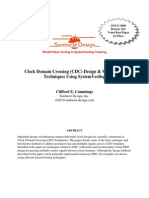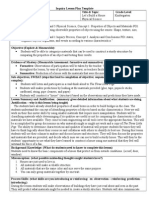0% found this document useful (0 votes)
4 views5 pagesFDS Exp3
NumPy is a powerful library for numerical computing in Python, centered around the N-dimensional array object (ndarray), which is more efficient than Python lists. It offers benefits such as efficient memory usage and fast computation through vectorized operations, allowing for easy creation and manipulation of arrays. Key features include mathematical operations, linear algebra capabilities, and broadcasting, making it essential for data analysis and scientific computing.
Uploaded by
harsh.pandey22Copyright
© © All Rights Reserved
We take content rights seriously. If you suspect this is your content, claim it here.
Available Formats
Download as PDF, TXT or read online on Scribd
0% found this document useful (0 votes)
4 views5 pagesFDS Exp3
NumPy is a powerful library for numerical computing in Python, centered around the N-dimensional array object (ndarray), which is more efficient than Python lists. It offers benefits such as efficient memory usage and fast computation through vectorized operations, allowing for easy creation and manipulation of arrays. Key features include mathematical operations, linear algebra capabilities, and broadcasting, making it essential for data analysis and scientific computing.
Uploaded by
harsh.pandey22Copyright
© © All Rights Reserved
We take content rights seriously. If you suspect this is your content, claim it here.
Available Formats
Download as PDF, TXT or read online on Scribd
/ 5






















































































